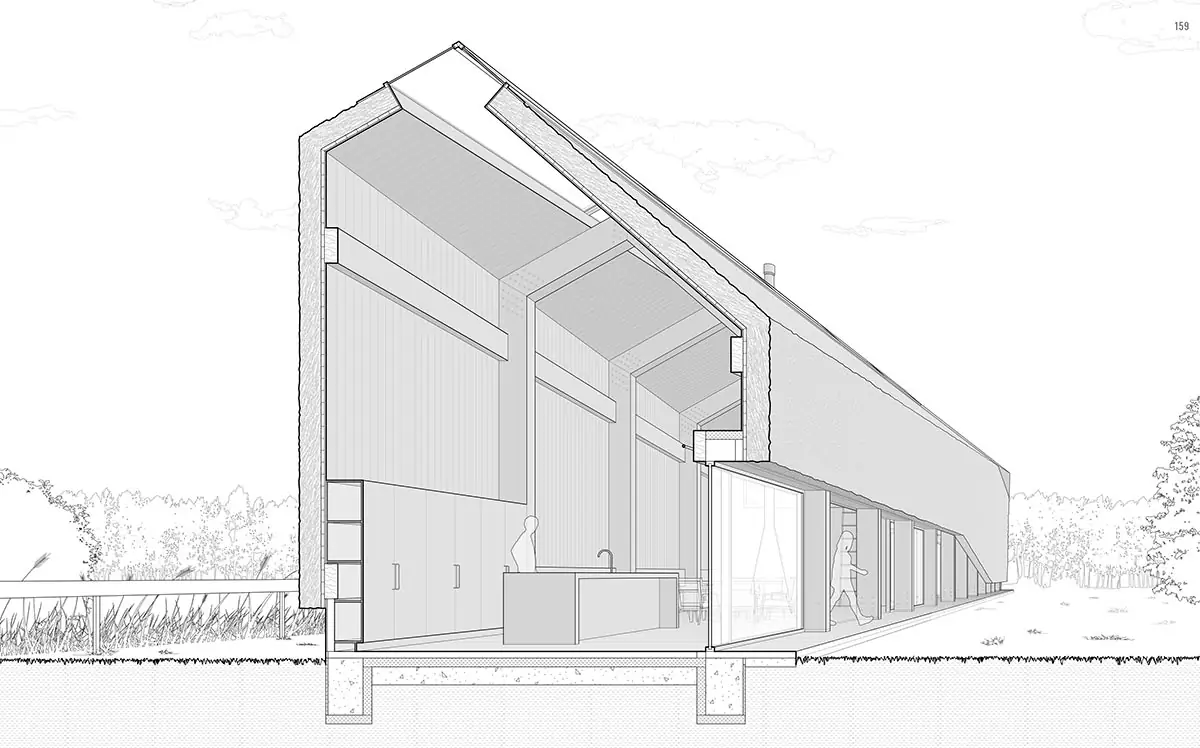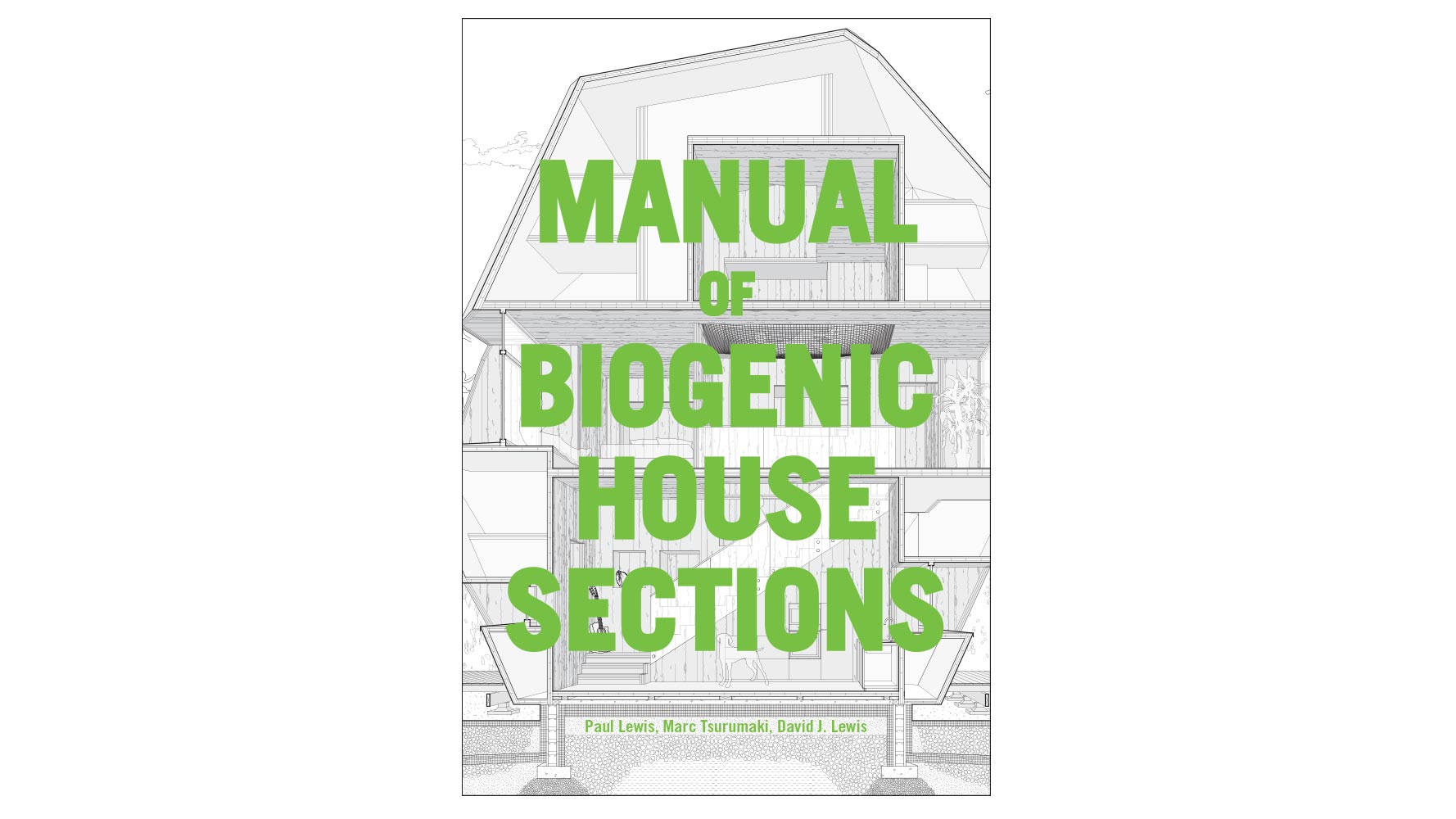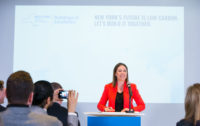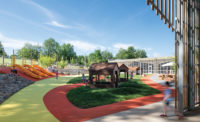With their eye-opening Manual of Section (2016), Paul Lewis, Marc Tsurumaki, and David Lewis of LTL Architects sliced through Rem Koolhaas’s Casa da Musica, Frank Lloyd Wright’s Guggenheim Museum, and Louis Kahn’s Exeter Library, among other buildings, to illustrate how architectural spaces interlock in three dimensions. In so doing, the architects reaffirmed the strength of section drawings as tools for showing how buildings are made. The trio’s new book, with the dry title Manual of Biogenic House Sections, cuts through some 55 houses over six continents, in rural settings as well as urban ones, with the goal of removing the mystery behind building with low-carbon materials, including bamboo, earth, hemp, timber, and stone.
This volume would be valuable even without the section drawings—it illustrates, in photographs, axonometrics, and text, how some of the least carbon-intensive houses in the world are put together. But the sections offer particularly close looks, thanks to the designers of these houses, who were willing to share their knowledge with the authors for the greater good. Leaving no straw bale unturned, the authors go on to estimate the embodied carbon of the houses, revealing a surprising range even among this collection of structures.

Dune House by Archispektras uses traditional reed thatch in a faceted roof. House by Archispektras, drawing courtesy Paul Lewis, Marc Tsurumaki, and David Lewis
The journey since their last book—from Wright and Rem to modest, earth-friendly abodes—reflects the evolution of the three LTL partners, who are also educators at Princeton, Columbia, and Parsons, respectively. All three have devised courses and curricula that enlist architecture students in the fight to lower the carbon emissions of buildings. Manual of Biogenic House Sections equips professionals with the necessary tools to address that same struggle. The amount of work that went into what is both a coffee-table book and a construction manual is staggering, and, while architects on the whole aren’t doing enough to help mitigate climate change, Lewis, Tsurumaki, and Lewis are trying, however they can, to empower others and make a difference.






Post a comment to this article
Report Abusive Comment